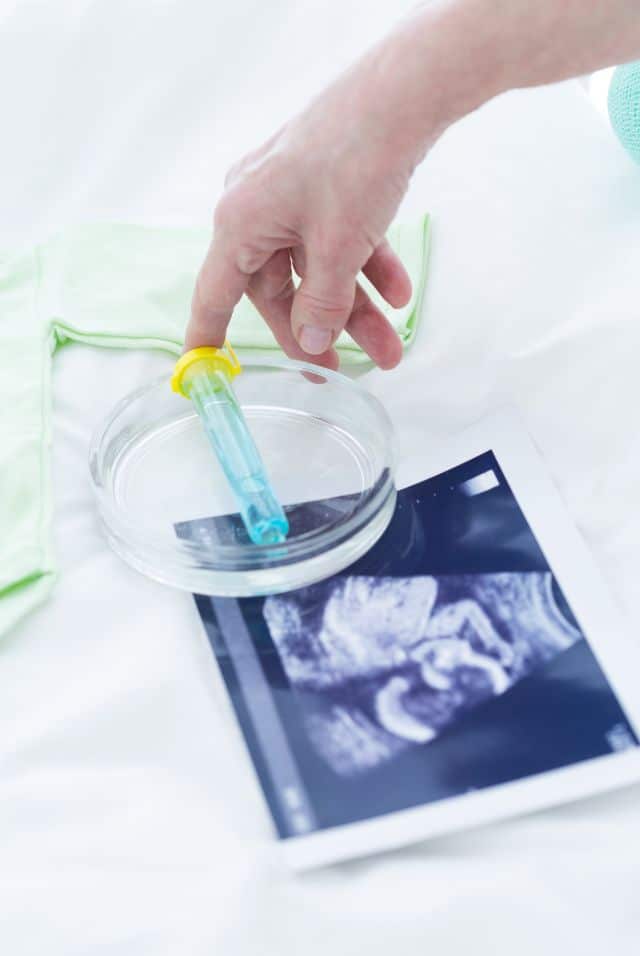Do You Have to Do Sonohysterography for IVF
Sonohysterogram is a particular form of ultrasound that enables your doctor to view the interior of your uterus.
When doing a sonohysterogram, your uterus is filled with saline so that ultrasonography can record the structures and forms inside of it.
A sonohysterogram can assist your doctor in identifying any issues with your uterus and endometrium that might be contributing to unfavorable symptoms like bleeding, pelvic pain, and infertility. Another frequent name for it is an SIS.
What is a Sonohysterogram
A sonohysterogram is a diagnostic imaging treatment that allows your doctor to see your uterus. It’s easy, risk-free, and mostly painless.
And it can assist in illuminating the root causes of problems like pelvic pain, irregular bleeding, and infertility.
When do I have to do a Sonohysterogram?
- Abnormal bleeding during a period (extremely heavy or unusually light periods)
- Abnormal cramping with a period
- Before doing IVF (to confirm there are no uterine problems that may interfere with embryo implantation)
- Infertility
- A mid-cycle spots
- Pelvic pressure or pain
- Menopause-related hemorrhage
- Loss of pregnancy repeatedly (two or more miscarriages in a row)
Sonohysterogram checks sonohysterogram checks for and can find polyps (non-cancerous growths) on the uterine lining, fibroids, uterine shape, and congenital uterine anomalies (such as the uterine septum, which is when tissue splits the uterus) (especially if they are protruding into the uterine cavity).
The test may also measure endometrial aberrant growths (which may or may not be malignant), uterine adhesions (scar tissue), and the general thickness or thinness of the endometrium and uterine wall.
In Vitro Fertilization (IVF)

In Vitro Fertilization is a set of sophisticated treatments used to help with fertility, prevent genetic issues, and aid in child conception.
In IVF, mature eggs obtained from ovaries in a lab are fertilized with sperm. The fertilized egg (or eggs) is then transferred to the uterus.
An IVF cycle typically takes about six to eight weeks from consultation to transfer, but the actual procedure, from ovarian stimulation to embryo transfer, is around two weeks. These processes can occasionally take longer when they are broken down into individual steps.
IVF is one of the most effective forms of assisted reproductive technology. The procedure can use the couple’s own sperm and eggs or involve donor eggs, sperm, and embryos.
During IVF, eggs, sperm, or embryos from known or unidentified donors may also be used. A gestational carrier may occasionally be necessary.
It might be applied to someone whose uterus has already received an embryo.
Your age and the underlying cause of your infertility are only two of the many factors that can affect IVF success rates.
IVF may be demanding, time-consuming, and expensive. If more than one embryo is implanted during IVF, it may result in a pregnancy with more than one fetus (multiple pregnancies)
The likelihood of having a healthy baby after utilizing IVF depends on several variables, including:
Mother’s age. The likelihood of becoming pregnant and giving birth to a healthy child using your eggs via IVF increases with age.
Women over the age of 40 may consider using donor eggs to increase the chances of IVF success, as egg quality and quantity decline with age.
Embryonic stage. Blastocyst stage transfers (day 5 or 6 embryos) are linked to higher pregnancy rates than transfers of less developed embryos (day 2 or 3). However, not all embryos survive the development stage.
Discuss your particular circumstance with your doctor or other healthcare professional.
Reproductive background. Women who have already given birth have a higher chance of success with IVF than women who have never given birth. Women who have used IVF more than once in the past but were unsuccessful in getting pregnant have lower success percentages.
The root of infertility is that your chances of utilizing IVF to conceive rise if you have normal egg production. Compared to women with unexplained infertility, those with severe endometriosis have a lower chance of success with IVF.
Lifestyle elements. Smokers frequently have fewer eggs removed during IVF and may miscarry more frequently. Smoking can reduce a woman’s success rate with IVF by 50%. Your chances of becoming pregnant and having a child can be lowered if you are obese. Alcohol, intoxicants, excessive coffee, and some medications can also be dangerous.
Should IVF Pregnant Have Sonohysterography?
The fertility test sonohysterography is risk-free. Infection is only very rarely a concern. It happens less than 1% of the time, making it uncommon.
If you are pregnant, the test should be avoided. Inform your doctor if you believe you could be. If you have a pelvic or vaginal infection that is still active, you shouldn’t do it either.
Remember! Your physician can explain IVF’s operation, potential hazards, and suitability for you as an infertility treatment option.
IVF Grants in the U.S.
See Also